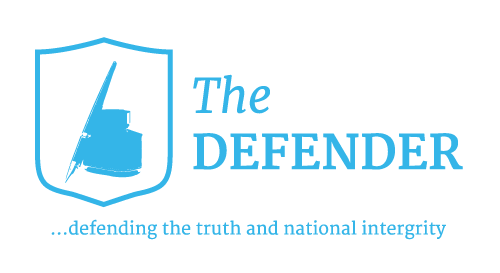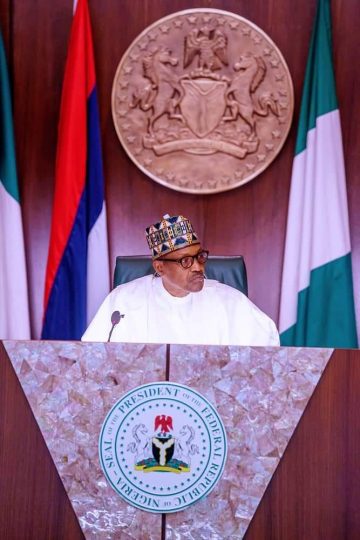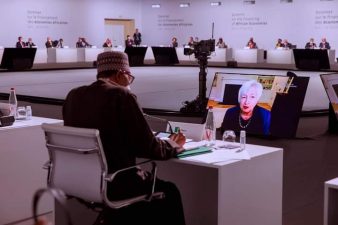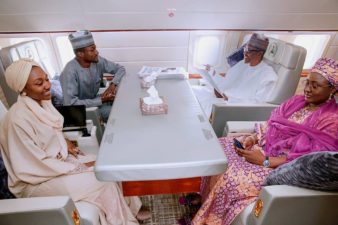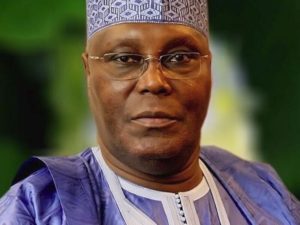By BASHIR ADEFAKA
The Presidency has come with yet another detailed information that truth seeking Nigerians require to understand the recent deregulation of downstream sector of the Nigerian economy leading to increase in the fuel pump prices in the country.
This is as Lauretta Onochie, Digital and Social Media Aide to President Muhammadu Buhari, took to her official Facebook social media handle Saturday night, which would be about third time she has been explaining the deregulation using verifiable details to drive home her point.
By the calling of her office, the body language expert came this time with an itemized detail she subtitled as “BACKGROUND ON FUEL PRICES, CASE FOR REMOVAL OF FUEL SUBSIDIES and BENEFITS TO THE NIGERIAN PEOPLE”.
The DEFENDER picked from the post and decided to run it unedited as follows:
BACKGROUND ON FUEL PRICES
● First, the deregulation of PMS prices was announced on 18 March 2020. The price modulation activity that took place announcing a new PMS pump price at the beginning of this month was just part of the on-going monthly adjustments to global crude oil prices.
● The long-drawn fuel subsidy regime that was being run by Nigeria in the past ended in March 2020, when the Petroleum Products Pricing Regulatory Agency (PPPRA) announced that it had begun fuel price modulation, in accordance with prevailing market dynamics and would respond appropriately to any further oil market development. This meant that the price of fuel would be determined mainly by the international price of crude oil.
● Sequel to this announcement, the price of fuel then dropped from ₦145 to ₦125 per litre, and then to between ₦121.50 and ₦123.50 per litre in May. With the low price of crude oil then, the cost of petrol, which is a derivative of crude oil, fell, and the lower pump price was passed on to the consumers to enjoy. With the price of crude inching up, the price of petrol locally is also bound to increase, hence the latest price of ₦162 per litre.
CASE FOR REMOVAL OF FUEL SUBSIDIES
● Subsidizing fuel is no longer feasible, especially under the prevailing economic conditions in the country. The government can no longer afford fuel subsidy, as revenues and foreign exchange earnings have fallen by almost 60%, due to the downturn in the fortunes of the oil sector.
● The effect of deregulation is that PMS prices will change as changes in global oil prices occur. Government can no longer afford to subsidize petrol prices, because of its many negative consequences. These include a return to the costly subsidy regime. With 60% less revenues today, we cannot afford the cost. The second danger is the potential return of fuel queues – which has, thankfully, become a thing of the past under this Administration. The days in which Nigerians queue for hours and days just to buy petrol, often at very high prices, are gone for good.
● The cost of fuel subsidy is too high and unsustainable. From 2006 to 2019, fuel subsidy gulped 10.413 Trillion Naira. That is an average of 743.8 billion Naira per annum. According to figures provided by the NNPC, the breakdown of the 14-year subsidy is as follows:
• – In 2006 -₦257bn
•- In 2007 -₦272bn
• – In 2008 -₦631bn
•- In 2009 -₦469bn
• – In 2010 -₦667bn
•- In 2011 -₦2.105tn
• – In 2012 -₦1.355tn
•- In 2013 -₦1.316tn
• – In 2014 -₦1.217tn
•- In 2015 -₦654bn
• – In 2016 -Figure Not Available
•- In 2017 -₦144.3bn
• – In 2018 -₦730.86bn
•- In 2019 -₦595bn
• Despite the recent review of the price of fuel to 162 Naira per litre, petrol prices in Nigeria remain the lowest in the West/Central African sub-regions. Below is a comparative analysis of petrol prices in the sub-regions (Naira equivalent per litre);
– Nigeria -₦162 per litre
– Ghana -₦332 per litre
– Benin -₦359 per litre
– Togo -₦300 per litre
– Niger -₦346 per litre
– Chad -₦366 per litre
– Cameroon -₦449 per litre
– Burkina Faso -₦433 per Litre
– Mali -₦476 per litre
– Liberia -₦257 per litre
– Sierra Leone -₦281 per litre
– Guinea -₦363 per litre
– Senegal -₦549 per litre
Outside the sub-region, petrol sells for ₦211 per litre in Egypt and ₦168 per litre in Saudi Arabia. You can now see that even with the removal of subsidy, fuel price in Nigeria remains among the cheapest in Africa.
BENEFITS TO THE NIGERIAN PEOPLE
● If, per chance, the price of crude drops again, the price of petrol will also drop, and the benefits will also be passed on to the consumers. The current price is not a foreclosure and it could be reviewed downwards once there is a drop as established.
● One of the difficult decisions, which we took at the beginning of the Covid-19 pandemic in March – when oil prices collapsed at the height of the global lockdown – was the deregulation of the prices of PMS. As, the benefit of lower prices at that time was passed to consumers with PMS selling at ₦125 per litre.
● The Federal Government is not unmindful of the pains associated with higher fuel prices at this time. That is why we will continue to seek ways to cushion the pains, especially for the most vulnerable Nigerians. The government is providing cheaper and more efficient fuel in form of auto gas. Also, Government, through the PPPRA, will ensure that marketers do not exploit citizens through arbitrarily hike in pump prices. And that is why the PPPRA announced the range of prices that must not be exceeded by marketers.
The digital and social media aide to the president concluded by ask urging Nigerians to “Please read and share.”
